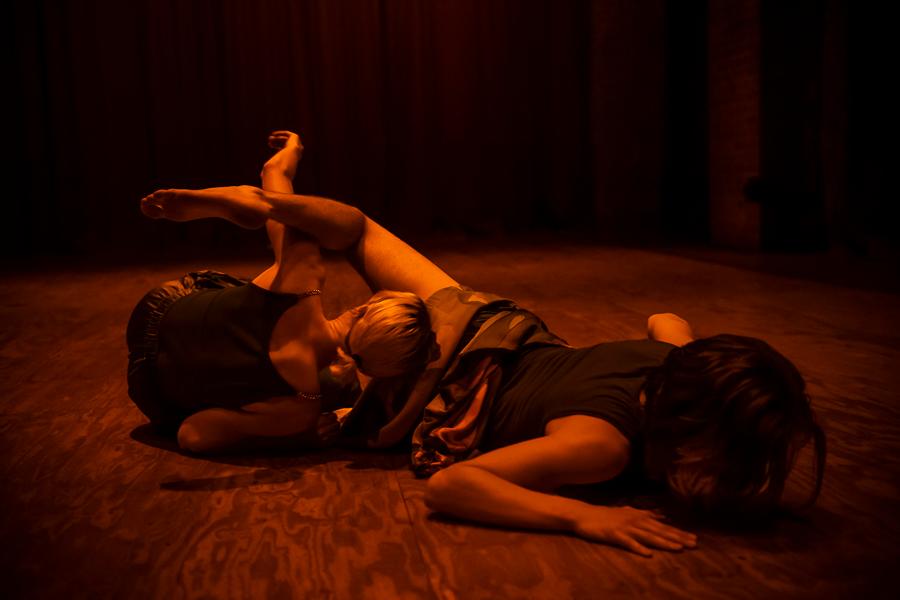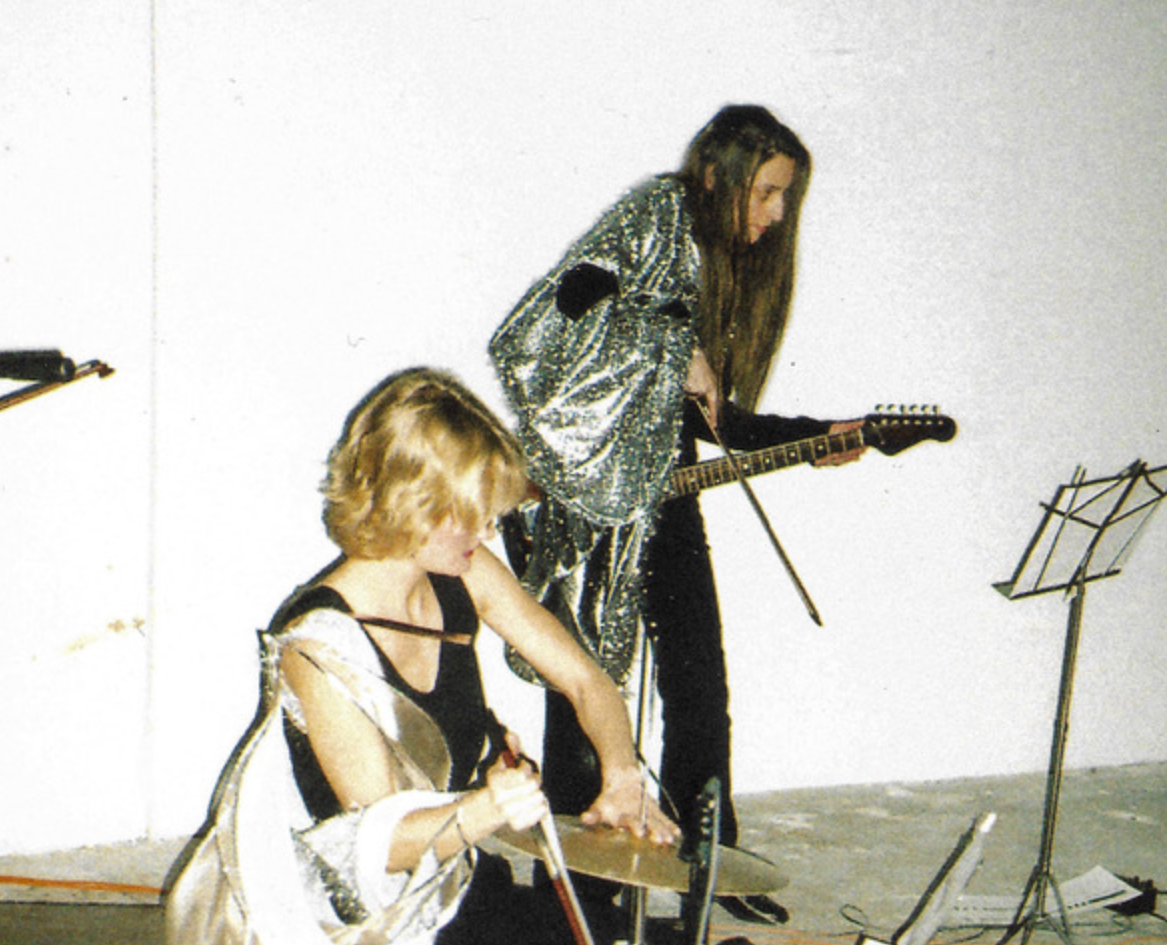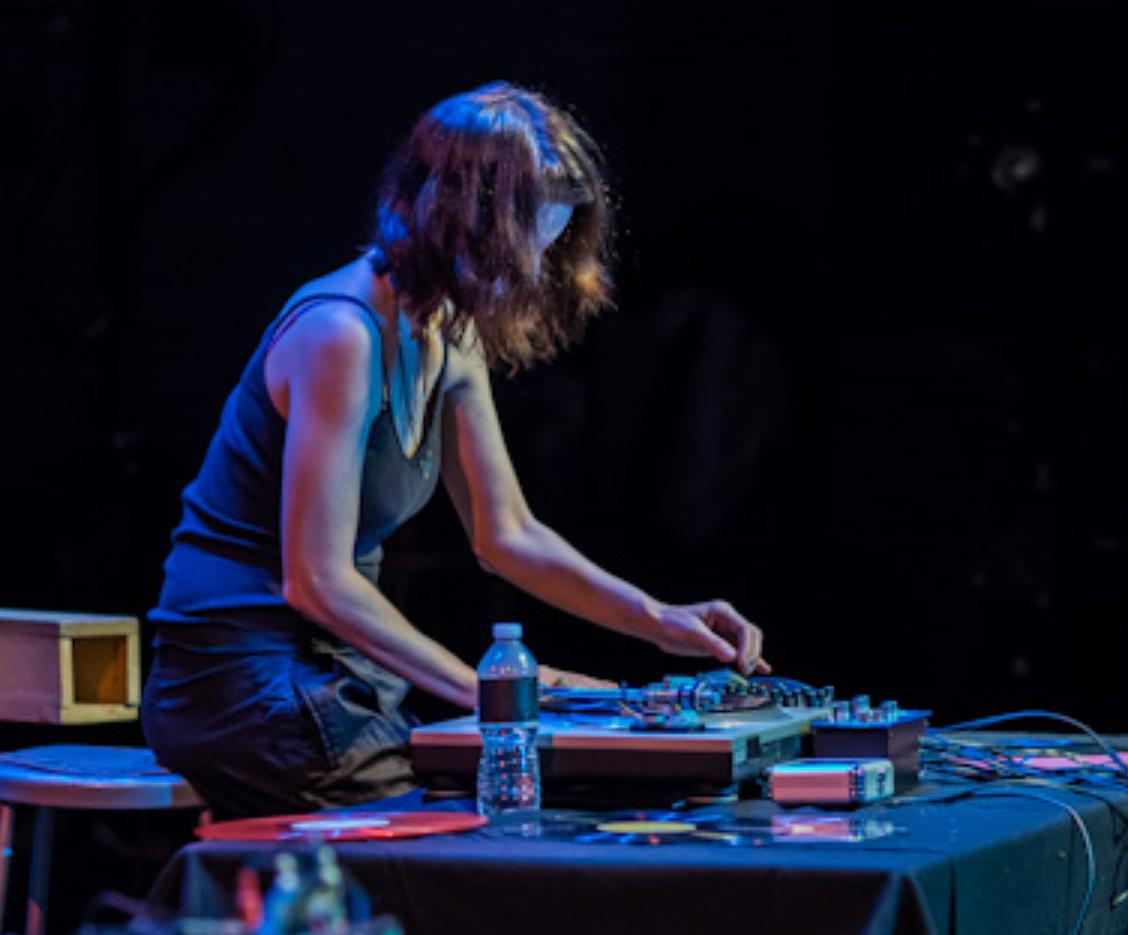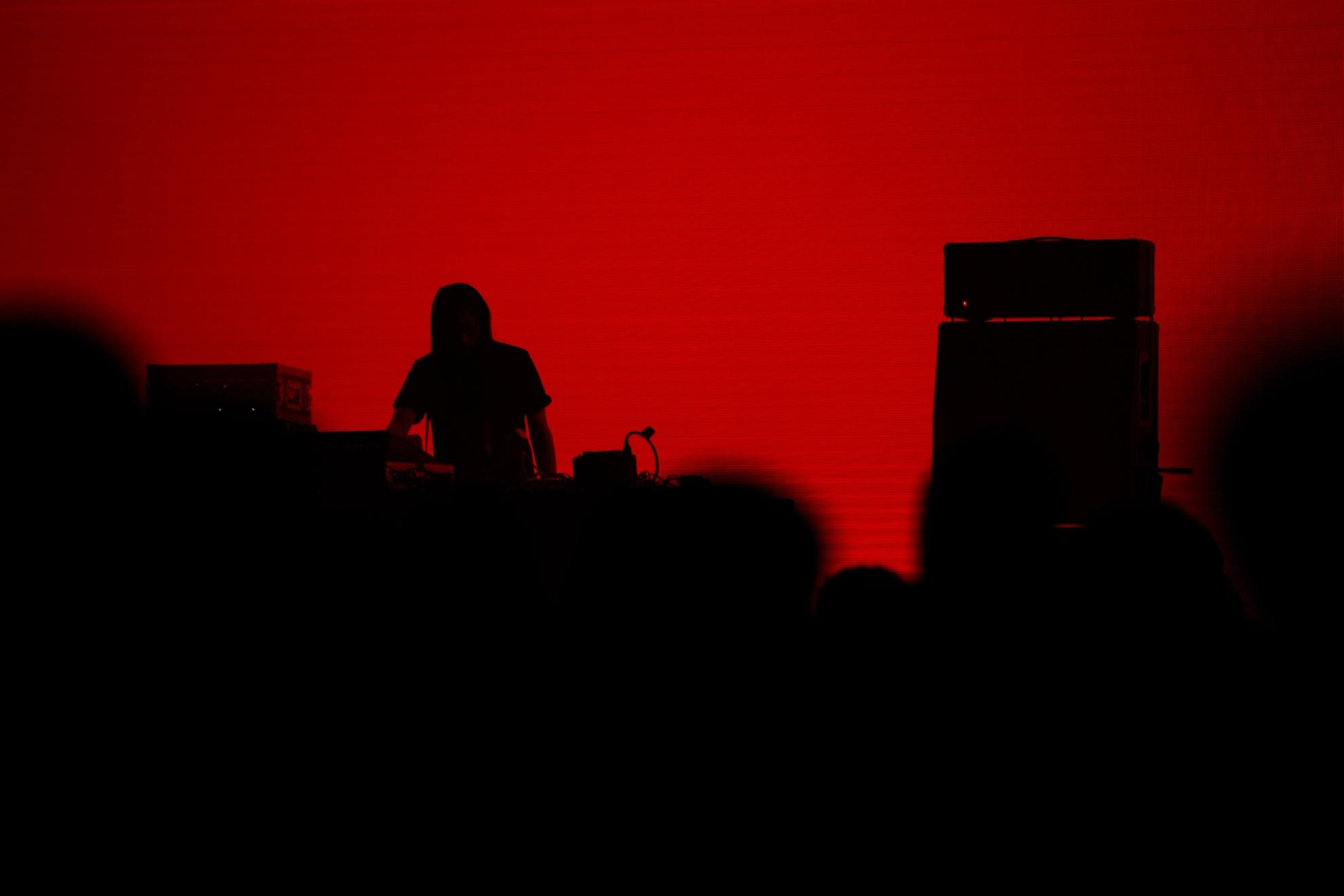
Lee Serle in conversation with Daniel Mudie Cunningham/
Dr Daniel Mudie Cunningham speaks with Lee Serle, dancer, choreographer and director of Time Portrait.
Soon after he moved to Sydney, Lee Serle and I met and formed an instant rapport. I was newly appointed Director of Programs at Carriageworks and still getting my head around the multi-arts expansion to my role, having joined the organisation nine months earlier as a senior curator working in visual arts. The first day we met in 2018 was amid a chaotic festival period. Lee’s presence was immediately calming, friendly and warm when all else throbbed with high-pitched intensity.
All the conventional rehearsal spaces were booked out for the rest of the year, so I showed Lee the Clothing Store – a two storey heritage building on the western end of the Carriageworks precinct. Built in 1913, the Clothing Store is part of the historic State Government’s Eveleigh Railway Workshops encompassing Carriageworks and the South Eveleigh precinct, formerly known as Australian Technology Park. In its heyday, the Clothing Store was the site for the production and distribution of the State Railway uniforms for NSW.
More than a century later in 2017, the first floor of the Clothing Store was transformed into a studio program for visual artists, while the ground floor was for public programs, workshops, developments, and community initiatives. I had wanted to see the space activated more fully across artforms, especially for dance. But its concrete floors, obtrusive brick columns and walls rendered it unsuitable to most. Regardless, Lee saw immediate potential for site-responsive work and a residency plan was hatched that day.
Over the course of his two-part residency Time Portrait came into slow focus, culminating with a showing in March 2019. It was a joy to witness the site transformed into a space for a different kind of creative labour. Neighbouring the rail corridor, the passing trains echo throughout the building as sonic punctuation for the ghosts of its past. Meshing historical and contemporary resonances, Lee produced a work reflecting on his own history as a choreographer, situating his bodily archive within a site bearing the heavy cargo of institutional governance and heritage casing.
Time Portrait melds the phenomenology of time with labour, push-pulling at linear and cyclical temporalities as a path clearing performance for past exorcisms, enabling consolidation in the present as a futureproofing exercise.
Time ebbs and flows in Time Portrait. Momentarily it withdraws in the background as an unsettling presence, then strikes like an alarm clock heralding the new day.
Daniel Mudie Cunningham: Why do you call this work Time Portrait?
Lee Serle: The first development was called Time Nasty. I got sick of dancing at a point and was doing a lot of reading and research into dance texts instead. I was looking for ways to create movement that wasn’t just from me and my body. So, I started looking at texts and just pulling words out, just flipping to a page and singling out a word. Like the cut-up action that musicians do to create songs. Those two words got paired together in the process of putting cue cards together, and that’s how Time Nasty came about. Because there was so much space and stillness in the initial choreography, they kind of looked like image portraits. I merged those two things together and it became Time Portrait.
DMC: You conceive of this work as a repertoire of past choreographic practice – a reflection of your body as an archive. It’s about self-portraiture in some ways, but it’s about time.
LS: It looks at my solo choreographic practice like little time capsules. They bleed into each other, but you rarely get to revisit them and do anything again. So, the bleeding of past works happens for me in performance. Every time I go in and have a solo practice and I’m in the studio and creating work, it’s like a physical journal, and then some of it just gets completely forgotten about. Then other things resurface in group works or commissions or other work that is not my solo work. So, the solo practice and the studio practice is the thing that feeds all my work. It filters into all aspects of everything, but because it’s inconsistent, you’re only getting a year here and then maybe I skip a few years where I don’t really have any studio time. They’re quite fractured in that way.
DMC: If it is an archive of choreography relating to your practice, what’s the process for selection? Or is it more organic that it’s just about ‘best of’ album or ‘retrospective’ to use an art term?
LS: I made a conscious decision not to look back at any documentation and visually pick out the things that I thought were in inverted commas ‘good’. I just remembered things physically and asked myself, “What still resonates now? What am I still interested in choreographically or what in my body is still present in remembering it?” Without having to look back at it and recreate short fragments that I’ve done. Starting Time Portrait in the Clothing Store at Carriageworks, I was doing a lot of dancing, but it felt like all this unnecessary noise around what was crucial. So that’s how it developed into having a lot of space and the actual dancing fragments are quite short and small, but then that created a severing of momentum. Moving from New York to Sydney created the exact same feeling. I didn’t have the networks, contacts or opportunities at that time. It felt like there were only fragments that were still important to me.
DMC: You talk about revisiting this choreography from the past through memory rather than documentation. Is it a kind of muscle memory?
LS: There have been studies on muscle memory and whether that’s a scientific thing or not. I don’t know, but I can still remember and perform works from 15 years ago without having to look at the footage.
DMC: Like if a song comes on that you haven’t heard in 20 years, and you can sing along to it. The body holds memory and trauma and all sorts of stuff but won’t express it until there’s a trigger. When something is embodied, it could be out of reach, hidden. It’s not like in a museological sense where a curator could select your work from a physical and visible catalogued archive. I’m fascinated by how you as the artist and curator can access it and call it back into being. That’s why I think I deferred to the idea of muscle memory, but it’s probably a lot more complex than that.
LS: In the dance world, the language is very much about the embodied archive.
DMC: How do you feel about that language? Is that what you think it is?
LS: Yes, it is that, but it has also shifted now because of technology. We document everything on video because it is so easy and accessible. I think that was also part of my wanting to just remember for myself and consider as you say, what the body memory was because I’m interested in how that shifts over time. The exact replication of something ephemeral from 15 years ago is not so important to me.
DMC: The construct of time is also about the idea of the aging body. Obviously, the same choreography will change again in another 15 years.
LS: Yeah, I wasn’t going to do massive, big jumping phrases across the room because I was like, “Fuck that. I’m on concrete and I’m 40.”
DMC: Speaking of concrete, to go back to the architecture of the first development at the Clothing Store at Carriageworks. It is a brutal building with concrete floor and columns, a heritage space not suited for dance. Time Portrait was so site-specific to this setting. But having developed it elsewhere over a period marked by Covid and all this other stuff, how has its original development at Carriageworks become what it is now at The Substation? Even though you’re in a theater, it is a similar repurposed industrial space.
LS: I’m trying to figure that out again, now. One of the developments was at a small studio called ReadyMade Works. I have since removed parts and tightened the stillnesses and added little dance parts. It is different because ReadyMade Works is more like a proscenium stage with a Tarkett floor and obviously a dance studio with a dance history. So, I felt I needed to adapt it to be more of a short dance work as opposed to a site-specific work. It was manipulated and adjusted to suit that context. Moving it from there back to a big, industrial open space, I’m kind of teetering. Do I make it even more of a dance kind of work or do I go back to what it was at Carriageworks? Increase the time, increase the portraiture of the stillnesses and empty it out again, because there’s a group dance layered on top. That can get quite busy, so do I empty it out even more or do I try and match them? How that operates is still teetering.
DMC: Is that how it normally works when you’re leading up to a season, that ‘teetering’? You’re cutting it fine in terms of resolving it, or is that part of the tension of producing and making for you?
LS: Usually I want to be certain and make crucial decisions early in the last rehearsal development leading up to presentation. I want to feel secure in the work, but how I feel about Time Portrait changes from day to day. Rather than trying to pin things down, I’m leaning into the uncertainty, which feels precarious and risky. After many years of doing this, I think I know what audiences want and it is clarity, readability and understanding. I don’t want to alienate the audience, but I’m really interested in getting to a place that’s not fully defined. What else can the form do? Being invested in the process of figuring out how to find clarity for the individual and within a group scenario is key.
DMC: It started off as a self-portrait and very much a solo piece. It’s gone from a solo show to a group show, to use art-speak. How collaborative is your process? You talk about working things out right until the final moment. Do you work with the group to finesse the outcome or is it about you responding to the group?
LS: My process is highly collaborative. That’s what I love about the art form. The group dance for Time Portrait has been developed over several years and is completely separate from the solo. Together we’ve developed a group dance practice that over time is refined, but still centered around autonomy of the individual within; to have agency to change the course of action, yet always consider their relationship and responsibility to others and to the work. My solo is not responsive to the group in performance, but the group can be responsive to me. Creating the two works in isolation and then layering or colliding them is interesting for me to see a convergence of choreographic forms and how they inform and support each other.
DMC: What was the process for making the score? I remember the soundscape that you created for the first showing but watching back the subsequent documentation I noticed it was silent.
LS: Initially I used a score from an older work by Alistair Macindoe, a great sound designer who is also a choreographer and dancer. But because I’m based in Sydney, I got in touch with Gail Priest to develop the final score. For the developments that I did in Melbourne, I was really focused on having a studio practice as a group and removing the sound for a while. For the short development period at ReadyMade and then at Campbelltown Arts Centre, Gail attended with the Sydney crew. I was going to do a Melbourne and Sydney version of this work to see what differences or similarities existed with the two different groups of dancers, but me doing the same solo, how that would work. It was an interesting process because I had Rhiannon Newton, Ivey Wawn, Patricia Wood, Wendy Yu and Tra Mi Dihn. It was a bit odd; I didn’t feel like I should be in it. So, I sat out for that development and watched the group work with Gail. And Gail talked a lot about how she operates in a similar way to dance. In that she has some set material, but live feeds and uses found sounds and things that are layered on top. Things can be always shifting and changing depending on how the dance plays out in that performance.
DMC: That shifting and changing, discursive or erratic sensibility makes me think about time, which we tend to think about in linear terms. How does time function in relation to how you approach choreography in your practice and in this work, this embodied archive?
LS: As choreography and dance is a time-based art form, time is always at the forefront of my thinking. But particularly within this work, which considers an archive of work over a long period and then looking at my solo, which is looped and establishes cyclical time, but is also retrospective and introspective that is about past time. In the group dance, time is in the present and is linear because it is an hour-long performance in which the dancers go from ‘here to there’. They’ve got the arc of an hour, but how they choose to delineate time within their own performance as individuals, but also as a group. Different arcs of time span from decades to hours to minutes and the seconds within that. In Time Portrait cyclical time has a looped, repetitive structure.
DMC: How arcs of time give shape to embodied archives has poetic resonance, especially as the years melt the diurnal time of here and now. Where will Time Portrait be in 15 years?
LS: The process of making Time Portrait has in many ways been the most valuable for me as a choreographer, particularly the discourse with my collaborators that has been established through making this work. I feel that this has changed how I will approach creating dance from now on and returning to the embodied archive more deliberately might create iterations of Time Portrait for years to come.
Dr Daniel Mudie Cunningham is a curator, writer and artist based on Gadigal land, Sydney. He was Director of Programs at Carriageworks from 2017-2022.



